Java Reference
In-Depth Information
:Presentation
Tier
:PlaceOrder
Facade
:Browser
selectRestaurant(restaurantId)
updateRestaurant(pendingOrderId, restaurantId)
PendingOrder+Restaurant+MenuItems
HTML page
Figure 7.5
Handling the request that selects a restaurant
This method takes as parameters the
pendingOrderId
, which is stored in the
HttpSession
, and the restaurant
ID
from the
HTTP
request. It returns a
PlaceOr-
derFacadeResult
, which consists of a status code, and the
PendingOrder
, which con-
tains the delivery information and a reference to the selected restaurant and its
menu items:
public class PlaceOrderFacadeResult {
private int statusCode;
private PendingOrderDetail pendingOrder;
public PlaceOrderFacadeResult(
int statusCode,
PendingOrderDetail pendingOrder) {
this.statusCode = statusCode;
this.pendingOrder = pendingOrder;
}
…
The status code indicates the outcome of calling the method. A façade method
can often have several expected outcomes, and a status code is a good way to com-
municate the outcome along with the data to display to the caller.
PendingOrder-
Detail
, which we first saw in section 7.2.1, is a view interface that provides a read-
only view of pending orders and is implemented by the
PendingOrder
class.







Search WWH ::

Custom Search